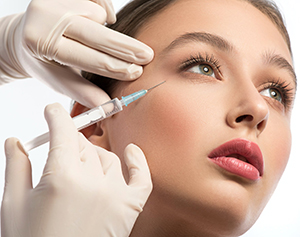The Cosmetic use of Botox - Summary of article in FRAME News Issue 57
Botulinum toxin, produced by Clostridium botulinum, is one of the most powerful poisons known. In 1989 the US Food and Drug Administration approved the use of BOTOX for the treatment of strabismus (squint) and blepharospasm (involuntary and uncontrollable, forcible closure of the eyelids). In 1987 an ophthalmologist noticed that patients treated for blepharospasm also showed shallower frown lines between their eyes.
The effect of botulinum toxin on facial wrinkles has caught the imagination of celebrities and its uptake has been fueled by the media hype arising around the promise of a semblance of youth. The toxin can also prevent the functioning of sweat glands, thus making it a treatment for excessive sweating. Underarm BOTOX injections were part of a package offered to the participants in the Oscar ceremony in 2002!
The paralytic action of BOTOX on wrinkles is temporary. It is necessary to receive a new injection every 3-4 months. There is therefore continuing demand from BOTOX users. Over the four years up to 2002, the use of BOTOX to treat facial wrinkles increased by 1500% in the United States. It is estimated that future sales could reach a figure of $1 billion per year by 2006.
The eagerness of some people to be injected with a highly potent toxin in order to turn their faces into expressionless masks would be simply risible were it not for the fact that the benefit of such a sop to vanity is obtained at an extremely high cost in terms of animal suffering.
Like other biological products, such as vaccines, the potency of botulinum toxin varies from batch to batch. Therefore each batch has to be tested and this consists of the classic LD50 test in which mice are injected with various doses of the toxin to see which dose will kill half of them. The testing of each batch requires at least 100 mice to be observed for 3-4 days. During this time, the animals experience diffuse muscular paralysis, impaired vision, and paralysis of the diaphragm leading to suffocation and death. This lethality test remains the gold standard used by all manufacturers to express the potency of their preparations.
It is a paradox that the public opposition to the testing of cosmetics has seemingly not been transferred to the testing of botulinum toxin for cosmetic use. However, information on this topic is lacking. An extensive search of news and internet sources did not retrieve a single article aimed at the general public.
There is no excuse for the fact that animals are being subjected to very severe procedures in order to permit the marketing of a product for cosmetic purposes. It is scandalous that this poor, universally criticised LD50 test is still being used. In an ideal world, a moratorium would be declared on the trivial, non-medical use of botulinum toxin, at least until such time it can be tested by humane methods. In reality commercial opportunism and individual vanity will undoubtedly prevail over ethics, especially if public pressure is lacking. This sad fact adds even more urgency to the pressing need for valid alternatives to the in vivo potency test.
The IAVS is producing a leaflet to highlight the cruelty behind Botox injections.


